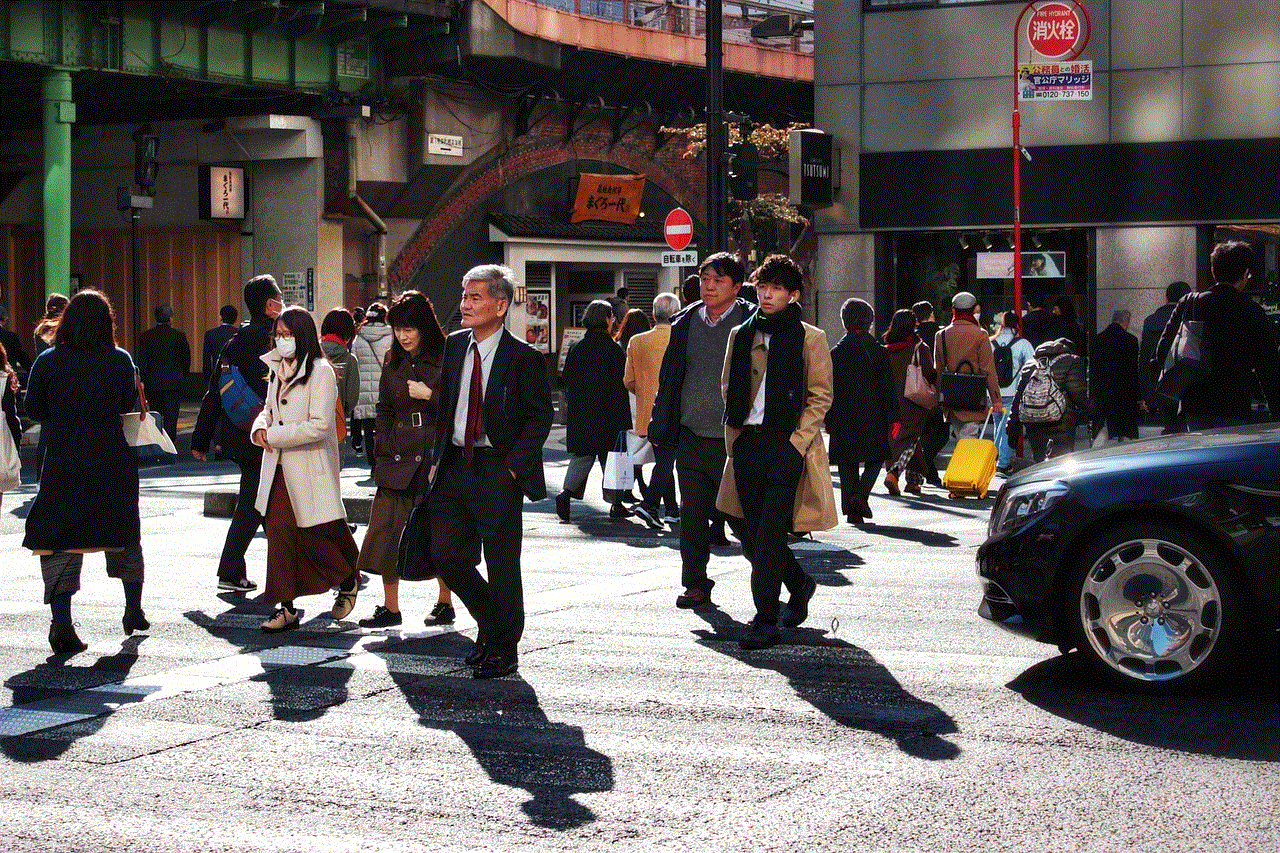facebook ip address
facebook -parental-controls-guide”>Facebook , the world’s largest social media platform, has revolutionized the way we connect and communicate with each other. With over 2.8 billion active users worldwide, it has become an integral part of our daily lives. But have you ever wondered about the infrastructure that powers this behemoth of a social network? In this article, we will dive into the world of Facebook’s IP addresses and explore how they enable us to stay connected with our friends and family.
First, let’s understand what an IP address is. IP stands for Internet Protocol, and an IP address is a unique numerical identifier assigned to each device connected to a computer network. It acts as a virtual address for devices to communicate with each other over the internet. Every website, including Facebook, has its own IP address, which is used to send and receive data from users’ devices.
Facebook has a complex and highly advanced network infrastructure that spans across the globe. To efficiently manage such a massive network, the company has divided its IP addresses into different categories. The two main categories are public and private IP addresses. Public IP addresses are used to identify devices on the internet, while private IP addresses are used for communication within a private network, such as a home or office network.
Now, let’s talk about Facebook’s public IP addresses. The company owns a vast range of IP addresses, which are constantly changing and expanding as its user base grows. Facebook has obtained these IP addresses from different regional internet registries, such as the American Registry for Internet Numbers (ARIN) and the Asia-Pacific Network Information Centre (APNIC). These registries are responsible for allocating IP addresses to organizations within their respective regions.
As of now, Facebook owns over 60,000 IP addresses, with the majority of them being IPv6 addresses. IPv6, or Internet Protocol version 6, is the latest version of the Internet Protocol. It provides a larger pool of addresses, which is essential for a platform as large as Facebook. The company has also been a strong advocate for the adoption of IPv6 and has been actively promoting its use.
Facebook’s IP addresses are spread out across different countries and continents, with the United States, India, and Brazil having the most significant number of IP addresses. This is not surprising, considering that these are the countries with the most significant number of Facebook users. The company also has a significant presence in Europe, with its data centers and servers located in countries like Ireland, Sweden, and Denmark.
To ensure smooth and uninterrupted service for its users, Facebook has deployed a technique called Anycast. Anycast is a routing technique that allows multiple servers to share the same IP address. It helps to distribute the load and improve performance, as requests are routed to the nearest server. This means that when you access Facebook, you are connected to the server closest to your location, resulting in faster loading times.
Now, let’s talk about Facebook’s private IP addresses. As mentioned earlier, private IP addresses are used for communication within a private network. In Facebook’s case, these are used for communication between its data centers and servers. The company has a vast network of data centers located across the globe, which are responsible for storing and processing user data. These data centers are connected via high-speed networks, and private IP addresses are used to facilitate this communication.
Facebook also uses a technique called network address translation (NAT) to conserve its pool of private IP addresses. NAT is a method of translating private IP addresses into public IP addresses, allowing multiple devices to share a single IP address. This helps to save resources and improve the efficiency of the network.
The security of its network is of utmost importance to Facebook, and the company employs various measures to protect its IP addresses from cyber attacks. It uses firewalls, intrusion detection systems, and other security protocols to prevent unauthorized access to its network. Facebook also regularly conducts security audits and has a dedicated team of experts to monitor and respond to any potential threats.
In recent years, Facebook has faced some criticism regarding its handling of user data and privacy. In response, the company has made significant changes to its privacy policies and has also taken steps to secure its network further. For instance, it has implemented Transport Layer Security (TLS) encryption to protect data in transit between its servers and users’ devices. It has also introduced the option for users to enable two-factor authentication, making it harder for hackers to gain unauthorized access to their accounts.
In conclusion, Facebook’s IP addresses play a crucial role in keeping the platform up and running, allowing us to stay connected with our loved ones. The company’s vast network infrastructure and its constant efforts to improve it ensure that we have a seamless experience while using its services. With the ever-growing number of users and the advancements in technology, Facebook’s IP addresses will continue to evolve and adapt to meet the demands of its users.
who blocked me on twitter
Twitter has become one of the most popular social media platforms in recent years, with millions of users from all around the world. It’s a great way to connect with friends, stay updated on news and trends, and even promote your own brand or business. However, like any other social media platform, Twitter is not immune to conflicts and disagreements. One of the most common problems that users encounter on Twitter is being blocked by someone. In this article, we will explore the topic of “who blocked me on Twitter” and discuss the possible reasons and consequences of being blocked on this platform.
Firstly, let’s understand what it means to be blocked on Twitter. When someone blocks you on Twitter, it means that they no longer want to see your tweets, retweets, or mentions on their timeline. They also won’t be able to see your tweets or interact with you in any way. Essentially, it’s like being invisible to that person on Twitter. You can still follow them and see their tweets, but they won’t know about it. Being blocked on Twitter can be a frustrating and confusing experience, especially if you don’t know who blocked you and why.
So, who can block you on Twitter? The answer is simple – anyone. Unlike other social media platforms, Twitter does not have any restrictions on who can block whom. It could be your friend, a celebrity, a business account, or even a stranger. In most cases, people block others to avoid seeing their tweets or to prevent them from interacting with their tweets. However, some people also block others out of spite or to gain power over them.
Now, let’s move on to the main question – who blocked me on Twitter? Unfortunately, there is no direct way to find out who has blocked you on Twitter. The platform does not send any notifications or alerts when someone blocks you. The only way to know for sure is to search for the user’s profile on Twitter. If you are blocked, you won’t be able to find their profile or see their tweets. However, this method is not foolproof as the user may have deactivated their account or changed their username.
If you are still not able to find out who blocked you on Twitter, there are a few other ways to narrow down the possibilities. Firstly, think about your recent interactions on the platform. Did you have any arguments or disagreements with someone? Did you tweet something that may have offended someone? In most cases, people block others because of personal conflicts or differences of opinion. If you can recall any such incidents, the person involved might be the one who blocked you.
Another way to find out who blocked you on Twitter is to check your blocked accounts list. To do this, go to your Twitter settings and click on “Blocked accounts.” Here, you will find a list of all the accounts that you have blocked. If you see the user’s profile on this list, then they have also blocked you.
Now that we have discussed who can block you on Twitter and how to find out who has blocked you, let’s explore the possible reasons for being blocked on this platform. The most common reason for being blocked on Twitter is for tweeting offensive or abusive content. Twitter has strict community guidelines, and any tweets that violate these guidelines can result in the user being blocked. This includes hate speech, threats, and harassment. It’s important to always be mindful of what you are tweeting and avoid engaging in any online arguments or fights.
Another reason for being blocked on Twitter is for spamming. If you constantly tweet promotional or irrelevant content, users may find it annoying and block you. This is particularly true for business accounts that use Twitter for marketing purposes. It’s important to strike a balance between promoting your brand and providing valuable content to your followers.
Similarly, being blocked on Twitter can also be a result of constantly retweeting or mentioning someone. While retweeting and mentioning can be great ways to engage with others on Twitter, doing it too frequently or without their consent can be seen as intrusive and annoying. It’s always a good idea to ask for permission before mentioning or retweeting someone, especially if you are not familiar with them.
In addition to these reasons, there could be personal reasons for being blocked on Twitter. For instance, someone may have blocked you because they don’t like your views or opinions. This is something that you have little control over, and it’s best to respect their decision and move on.
Finally, let’s discuss the consequences of being blocked on Twitter. The most obvious consequence is that you won’t be able to see the user’s tweets or interact with them. This can be frustrating, especially if it’s someone you were following closely or frequently interacted with. However, being blocked on Twitter is not the end of the world. You can still engage with other users and continue using the platform as usual. It’s important to remember that not everyone will like or agree with your content, and being blocked is just a part of the social media experience.
In conclusion, being blocked on Twitter is a common occurrence, and it can happen for various reasons. While it can be frustrating and confusing, it’s important to handle the situation maturely and respect the other person’s decision. If you find yourself in a situation where you have been blocked, it’s best to move on and focus on building positive relationships with other users on the platform. After all, Twitter is all about connecting and engaging with others, and being blocked by someone should not deter you from enjoying this experience.
remote cam android
Remote cameras have become increasingly popular in recent years, especially with the rise of smartphones and their advanced technology. One such example is the remote cam Android, which allows users to control and view their cameras remotely from an Android device. This innovation has made it easier for individuals to capture high-quality photos and videos from a distance, making it a must-have for photographers, videographers, and even casual users.
In this article, we will delve deeper into the world of remote cam Android, discussing its features, benefits, and how it has revolutionized the way we capture moments. So, let’s get started!



What is a Remote Cam Android?
A remote cam Android is a camera that can be controlled and accessed from an Android device. It works by connecting the camera to the phone via Bluetooth or a Wi-Fi connection, and then using a dedicated app to control its settings and capture photos or videos. This allows users to control their cameras from a distance, making it ideal for situations where manually operating the camera is not possible or convenient.
Features of Remote Cam Android
Remote cam Android devices come with a host of features that make them stand out from traditional cameras. Some of the notable features include:
1. Wireless Connectivity: As mentioned earlier, remote cam Android devices can be connected to a smartphone wirelessly, eliminating the need for wires and cables. This not only makes it more convenient to use but also allows for better mobility.
2. App Control: The dedicated app that comes with the remote cam Android allows users to control various settings of the camera, such as ISO, shutter speed, aperture, and more. This gives users more control over their shots and allows them to experiment with different settings.
3. Live View: Another significant feature of remote cam Android is the ability to view the camera’s live feed on the phone’s screen. This is particularly useful when the camera is placed in a hard-to-reach or dangerous location, as it allows users to see what the camera is capturing without having to physically access it.
4. Time-Lapse and Interval Shooting: Some remote cam Android devices also come with time-lapse and interval shooting features, which allow users to capture a series of images at set intervals. This is perfect for capturing stunning time-lapse videos or creating creative stop-motion animations.
5. High-Quality Images and Videos: Many remote cam Android devices come with high-resolution sensors and advanced lenses, allowing users to capture professional-quality images and videos. This makes it a great tool for both professionals and casual users.
Benefits of Using Remote Cam Android
Now that we have discussed the features of remote cam Android, let’s take a look at some of the benefits of using this innovative device:
1. Convenience: The most significant benefit of using a remote cam Android is the convenience it offers. Users can control their cameras from a distance, making it easier to capture shots in situations where manually operating the camera is not possible.
2. Mobility: The wireless connectivity of remote cam Android devices allows for better mobility. Users can control the camera from a distance, making it ideal for capturing shots in challenging or dangerous locations.
3. Improved Creativity: With the app control and live view feature, remote cam Android devices give users more control over their shots, allowing them to experiment and be more creative with their photography and videography.
4. Time-Saving: Remote cam Android devices can save users a lot of time, as they eliminate the need to go back and forth between the camera and the phone. This is particularly useful when capturing shots in challenging locations or when shooting time-lapse videos.



5. High-Quality Results: The high-resolution sensors and advanced lenses of remote cam Android devices ensure that users capture professional-quality images and videos, making it a must-have for photographers and videographers.
Uses of Remote Cam Android
Remote cam Android devices have a wide range of uses, some of which include:
1. Wildlife Photography: With its wireless connectivity and app control, remote cam Android is perfect for capturing shots of wild animals from a safe distance.
2. Sports Photography: The live view feature of remote cam Android makes it ideal for capturing action shots during sports events.
3. Travel Photography: The convenience and mobility offered by remote cam Android devices make them perfect for capturing stunning travel photos and videos.
4. Event Photography: Remote cam Android devices are also popular among event photographers, as it allows them to capture shots from different angles without having to constantly move around.
5. Real Estate Photography: The live view and time-lapse features of remote cam Android make it a useful tool for capturing stunning shots of properties and buildings.
How to Choose the Right Remote Cam Android
With so many options available in the market, it can be overwhelming to choose the right remote cam Android device. Here are a few things to consider when making your purchase:
1. Compatibility: Before buying a remote cam Android, make sure it is compatible with your Android device. Some devices may only work with specific phone models or operating systems.
2. Features: Consider the features that are most important to you and choose a device that offers them. For instance, if you are a wildlife photographer, you may want a device with a longer wireless range and a durable build.
3. Price: Remote cam Android devices come in a wide price range, so it’s essential to set a budget and choose a device that fits within it.
4. Reviews: It’s always a good idea to read reviews of the product before making a purchase. This will give you a better idea of the device’s performance and help you make an informed decision.
Conclusion



Remote cam Android has revolutionized the way we capture moments, giving us more control and convenience over our photography and videography. With its wireless connectivity, advanced features, and high-quality results, it has become a must-have for professionals and casual users alike. So, if you are looking to take your photography to the next level, consider investing in a remote cam Android device and see the difference it makes!
0 Comments